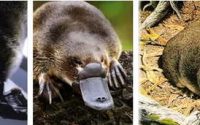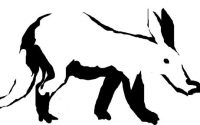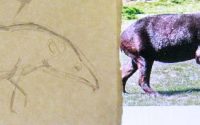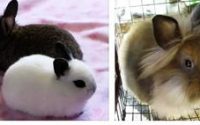How to draw an otter tutorial

Let`s learn how to draw an otter. The word “otter” is related to the word “water”. It is not surprising – all otters lead either water or semi-aquatic life. Let’s move on to drawing and here’s our first lesson.
How to draw an otter sitting
We find a good expressive photo and the first thing we do a sketch. Under the spacious skin and fur, the structure of the paws is difficult to guess, but we logically complete the scheme and denote the places of folds of the limbs.
After the sketch is drawn, I advise you not to hurry, wait for a while and with a fresh look compare whether the proportions are correctly seized and whether similarity is achieved. After making sure that the sketch is correct, we can start drawing – we’ll start with the largest part, that is, the torso and tail. The sitting otter has a steeply curved back. The conical tail is of medium length.

Since the otters are adapted to swim, they have swimming membranes between all the fingers. On the hind legs the fingers are longer.

The front paws have significantly shorter fingers.

The muzzle is typical for a representative of the mustelids.

Okay, the line drawing is ready. It’s time to paint. But there is a nuance – in nature otters usually occur just got out of the water and the hair is wet and stuck together. Let’s try to show this with special hatching. You certainly understand that the hair is located along the trunk, but not chaotically.

And so the final image will look like:

And here’s another otter drawing lesson.
How to draw an otter standing

Hmm, I see these otters have paws very short. But what a fat belly! In return the backrest almost is straight. In general, the otter is similar to itself and we will draw it in the same sequence as the first one.
Draw the plump body and long neck:

The front legs stand strait:

The hind legs are strongly bent:

The muzzle is the same – chubbyand cute:

Now draw a wet fur:

And add some shadows:

I hope by now you are well learned to draw an otter.





